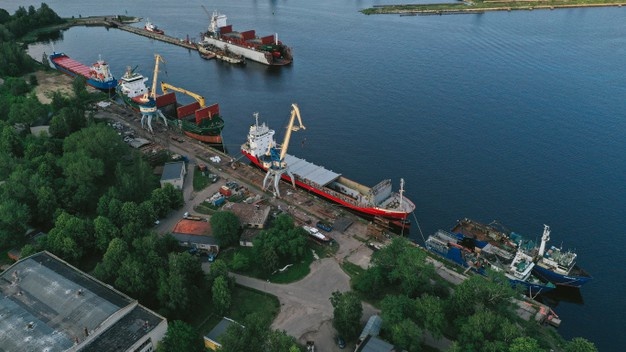On April 7, the main contract of crude oil futures of the previous stock exchange closed at 628.7 yuan / ton, down 6.71%, the largest one-day decline of the contract since March 16.
In this regard, An Ziwei, senior energy analyst at the Dongzheng Derivatives Research Institute, told the reporter of Securities Daily: "First of all, it is affected by the weak demand in the Chinese market. Since March, the epidemic has led to the upgrading of sealing and control measures in some regions, and some first tier cities have also upgraded prevention and control measures, resulting in the decline of road and air travel, resulting in the weak short-term demand in the Chinese market. Second, since last year, the international oil price has remained high, the cost pressure of Chinese refining and chemical enterprises is large, and the expectation of weak terminal demand is superimposed. Some refineries have reduced the operating rate and taken low measures Inventory operation, these factors will restrict enterprises from purchasing raw materials; Finally, it is mainly affected by the decline in international oil prices. "
International crude oil prices have continued to decline recently. Since last week, as of 6:00 on April 7, 2022 Beijing time, the main contract of ice Brent crude oil futures closed at US $101.65/barrel, with a cumulative decline of 12.99% during the period; Since last week, as of 5:00 Beijing time on April 7, 2022, the main contract of nymexwti crude oil futures closed at US $96.97/barrel, with a cumulative decline of 13.88%. On April 7, as of 15:00 Beijing time, although the international oil price rebounded slightly, the rebound range was less than 2%.
For the main reasons for the decline in international oil prices, Li Yunxu, senior analyst of SDIC Anxin futures, told the Securities Daily: "the main reason for the short-term decline in oil prices is the release of huge strategic oil reserves. After Biden said in his speech last week that he had authorized the release of 1 million barrels of U.S. oil reserves a day and a total of 180 million barrels of oil reserves in the coming months. On April 6, the International Energy Agency (IEA) It also said that member states of the international energy agency would coordinate the release of 120 million barrels of oil, of which about 60 million barrels came from the United States, the largest oil storage release in the 47 years since the establishment of the IEA. So far, the total global oil release will reach 240 million barrels. " "Although the current international oil price is still dominated by geopolitical factors, and the release of strategic oil reserves can only be regarded as a passive response, from the perspective of the duration and scale of the release, it has a substantial impact on the supply and demand pattern after the release." Li Yunxu said.
When estimating the future trend of international oil prices from the global pattern of crude oil supply and demand, Wu Qihong, chief researcher of Guangzhou Bandung Securities Consulting Co., Ltd., told the reporter of Securities Daily: "in the medium term, there is strong fundamental support for international oil prices. The nymexwti crude oil futures price is expected to remain around $90, and the oil price center in 2022 will be significantly higher than that in 2021."
Li Yunxu said, "At present, it is difficult to determine the incremental rhythm brought by the reduction of Russian crude oil exports, the release of Iranian crude oil and the acceleration of production increase by OPEC + active production reduction countries. However, the release of strategic oil reserves by the United States will reduce the time required for supply and demand to reach balance. If the decline of Russian exports is less than expected or the duration is limited, the market may face obvious pressure in the second half of the second half of the continuous release of strategic oil reserves. Therefore, from the perspective of marginal variables on the supply side In terms of degree, the time when supply is expected to be most scarce may have passed. The view of maintaining the high oil price is expected to maintain the high shock situation since mid March. "
An Ziwei said, "the release of oil strategic reserves by the United States provides a short-term buffer for the market. The expectation of further expansion of the supply gap has decreased, reducing the possibility of sharp rise in oil prices in a short time, and the near-end oil prices have been suppressed. However, in the medium and long term, the reconstruction of inventories still needs to be supported by increasing production, but the willingness of major oil producing countries to further increase production is low. It is expected that the oil price will remain in a range shock trend for some time in the future."
"International oil prices remain high and volatile, which is good for oil companies, coal chemical and other enterprises." Wu Qihong said. As of April 7, seven listed companies in the A-share oil and gas exploitation and service sector have released the annual report data of 2021. Among them, the net profits of the three companies, including Xinjiang Xintai Natural Gas Co.Ltd(603393) (186.49%), CNOOC (181.77%) and Sinopec Oilfield Service Corporation(600871) (127.65%), increased by more than 100% year-on-year; At the same time, four companies in the coal chemical industry sector also released the annual report data of last year. The net profit growth rate of four companies, including Jiangsu Sopo Chemical Co.Ltd(600746) (938.45%), Shanghai Huayi Group Corporation Limited(600623) (600.86%), Shandong Hualu-Hengsheng Chemical Co.Ltd(600426) (303.37%), Ningxia Baofeng Energy Group Co.Ltd(600989) (52.95%) exceeded 50% year-on-year, and the performance is very excellent.
\u3000\u3000
